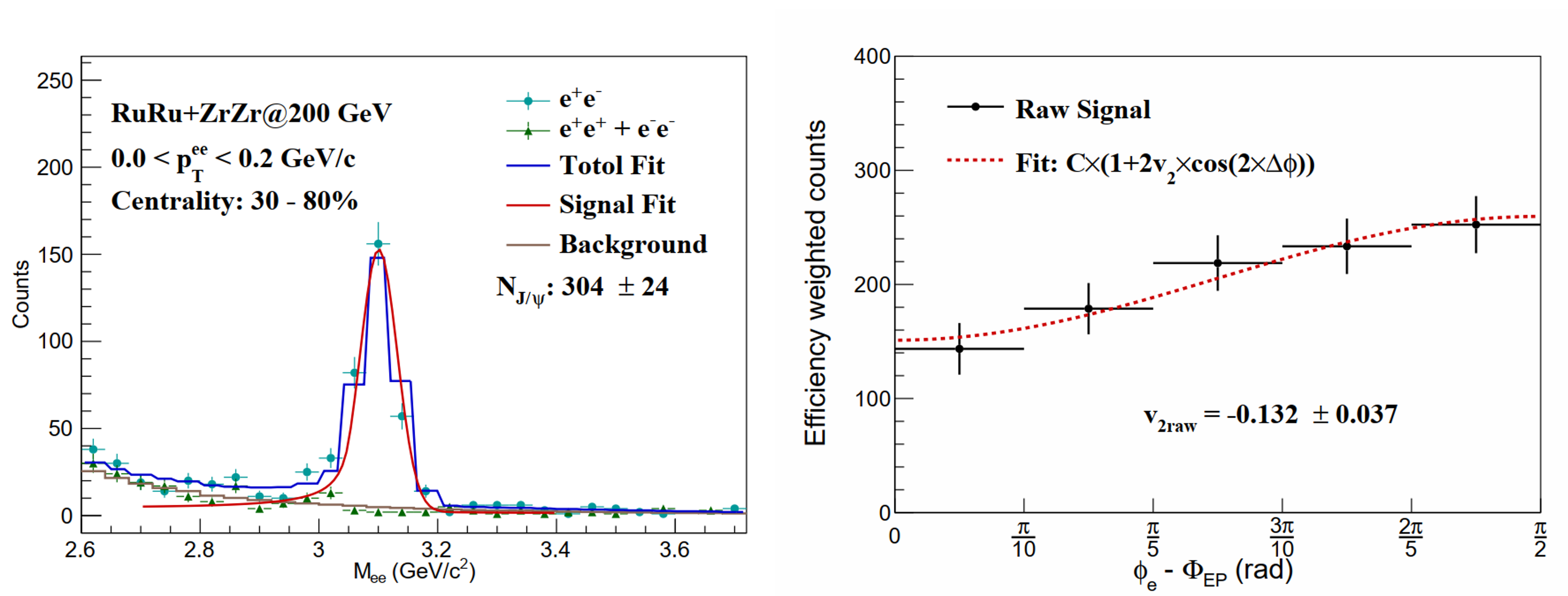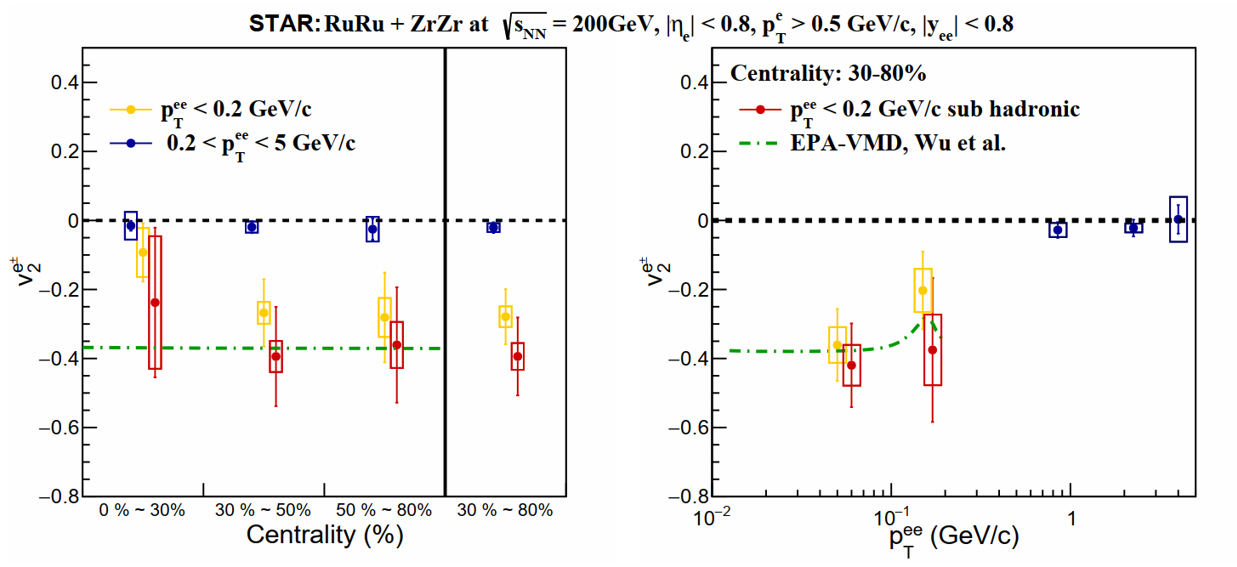paper proposal for Jpsi decay anisotropy
Measurement of decay anisotropy for J/Ψ photoproduction in relativistic heavy-ion collisions
PAs :Ashik Ikbal, Kaifeng Shen, Zebo Tang, Kaiyang Wang, Xin Wu, Zhangbu Xu, Qian Yang,Wangmei Zha,
Target Journal:PRL
Abstract:
Figures:
|
|
| Figure 1. Schematic diagram illustrating the polarized photon-nuclear interaction that creates J/Ψ, The electric field vector indicates the polarization direction of the produced J/Ψ, which is aligned with impact parameter. |
|
|
| Figure 2.Invariant mass distribution and fit of J/Ψ particle in 30%-80% Ru+Ru and Zr+Zr collisions, Right: single track efficiency reweighted φe− − ΦEP and Fitted v2 signal |
|
|
| Figure 3. The orange and blue points represent the pT < 0.2 GeV/c and 0.2 GeV/c< pT <5.0 GeV/c , the red points show the photon-induced 〖electron v2 with the hadronic background subtracted, assuming zero electron v2 contribution from hadronic processes. Left: electron v2 vs. Centrallity, Right: electron v2 vs.pT |
Summary:
In conclusion, our study presents the first evidence of an azimuthal angular correlation between electrons and the collision geometry induced by electromagnetic fields in Ru + Ru and Zr + Zr collisions at STAR.
These findings reveal a strong correlation between the initial collision geometry and the polarization of photons involved in photon-nucleus interactions, providing a direct probe of photon polarization.
Furthermore, the electrons produced through photoproduction carry the initial geometry information, and their observed anisotropy offers a novel tool for examining the relationship between initial geometric conditions and hadronic collective behaviors. While our current work focuses on the electromagnetic fields induced anisotropy aspects, it opens up possibilities for future studies to take this anisotropy as a probe to investigate the relationship between initial geometry and the collective dynamics of hadrons.
Related presentations:
Here is a summary of links about related presentations on pwg meeting.
- kwang's blog
- Login or register to post comments

.png)

